Uncategorized
Crypto Daybook Americas: The Sea of Red May Not Ebb as Fast as Expected
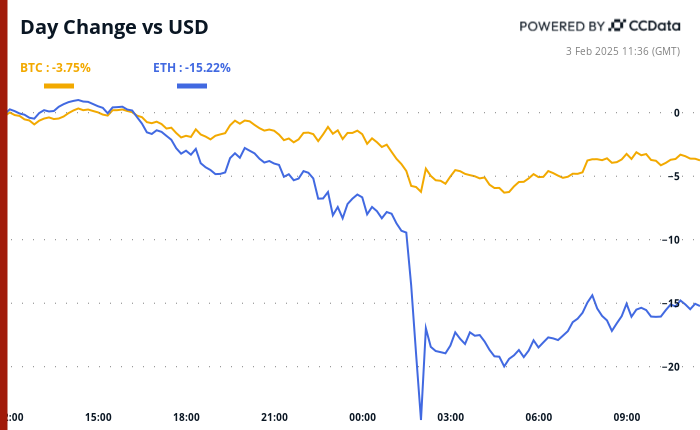
By Omkar Godbole (All times ET unless indicated otherwise)
Crypto markets are a sea of red alongside a growing risk aversion in traditional markets, and Trump’s tariffs are to blame. Late Friday, the president imposed a 25% tariff on imports from Canada and Mexico and 10% on China, provoking retaliatory measures that have reignited a trade war reminiscent of 2018.
The consensus on social media and among the analyst community is that this tariff-induced slide in the crypto market is temporary and that bitcoin (BTC) will quickly rebound. However, there are reasons to believe otherwise.
Firstly, Trump has shattered the crypto market’s belief that he is looking to pump markets and would use small tariffs merely as a negotiating tactic. In fact, he has threatened to increase tariffs if trading partners retaliate. Since Canada and Mexico responded with their own measures, the potential for further tariff hikes looms large.
Geo Chen, a macro trader and author of the popular Substack-based newsletter, Fidenza Macro, shared his perspective in an email to subscribers: «My view is that they will remain in place for several months with the risk of increasing, as Canada has pledged to retaliate and China has initiated a lawsuit against the U.S. in the World Trade Organization. These responses could escalate the situation. The best we can hope for is a partial rollback of tariffs once negotiations conclude.»
Chen emphasized that the tariffs are driven by trade deficit concerns rather than the fentanyl crisis, as Trump likes to portray, adding that markets may take days or weeks to grasp this, leading to persistent volatility. Besides, the latest tariffs are on $1.3 trillion worth of goods that the U.S. imports from the three nations, which is seven times bigger in value than the first shot fired in 2018.
All this makes the latest episode appear more destabilizing than back then, when the S&P 500 initially dropped 9% from its peak in March before quickly rebounding. In other words, the potential pain may be greater this time around, which poses a challenge for risk-on assets like BTC.
As one crypto trader choosing to stay anonymous said: «Despite the talk of deals, this move doesn’t feel temporary.» Stay alert!
What to Watch
Crypto:
Feb. 4: Pepecoin (PEPE) Halving. At block 400,000, the reward will drop to 31,250 PEPE.
Feb. 5, 3:00 p.m.: Boba Network’s Holocene hard fork network upgrade for its Ethereum-based L2 mainnet.
Feb. 6, 8:00 a.m.: Shentu Chain network upgrade (v2.14.0).
March 11 (TBC): Ethereum’s Pectra upgrade.
Feb. 13: Start of Kraken’s «gradual» delisting of the USDT, PYUSD, EURT, TUSD, UST stablecoins for EEA clients. The process ends March. 31.
Macro
Feb. 3, 9:45 a.m.: S&P Global releases January’s U.S. Manufacturing PMI Final report.
Est. 50.1 vs. Prev. 49.4
Feb. 3, 10:00 a.m.: The Institute for Supply Management (ISM) releases January’s Manufacturing PMI Report on Business.
Est. 49.5 vs. Prev. 49.3
Feb. 4, 10:00 a.m.: The U.S. Bureau of Labor Statistics (BLS) releases December’s Job Openings and Labor Turnover Survey (JOLTS) report.
Job Openings Est. 7.88M vs. Prev. 8.098M
Job Quits Prev. 3.065M
Feb. 5, 9:45 a.m.: S&P Global releases January’s US Services PMI (Final) report.
Est. 52.8 vs. Prev. 56.8
Feb. 5, 10:00 a.m.: The Institute for Supply Management (ISM) releases January’s Services ISM Report on Business.
Services PMI Est. 54.3 vs. Prev. 54.1
Services Business Activity Prev. 58.2
Services Employment Prev. 51.4
Services New Orders Prev. 54.2
Services Prices Prev. 64.4
Earnings
Feb. 5: MicroStrategy (MSTR), post-market, $0.09
Feb. 10: Canaan (CAN), pre-market
Feb. 11: HIVE Digital Technologies (HIVE), post-market
Feb. 11: Exodus Movement (EXOD), post-market, $0.14 (2 ests.)
Feb. 12: Hut 8 (HUT), pre-market, C$0.01
Feb. 12 (TBA): Metaplanet (TYO:3350)
Feb. 12: Reddit (RDDT), post-market
Feb. 13: CleanSpark (CLSK), $-0.05
Feb. 13: Coinbase Global (COIN), post-market, $1.61
Feb. 18: CoinShares International Ltd (STO:CS), pre-market
Feb. 18: Semler Scientific (SMLR), post-market, $0.26 (1 est.)
Feb. 20: Block (XYZ), post-market, $0.88
Feb. 26: MARA Holdings (MARA), $-0.15
Feb. 26 (TBA): Sol Strategies (CSE: HODL)
Feb. 27: Riot Platforms (RIOT), $-0.18
March 4: Cipher Mining (CIFR), $-0.09
March 6 (TBA): Bitfarms (BITF)
March 17 (TBA): Bit Digital (BTBT)
March 18 (TBA): TeraWulf (WULF)
March 27 (TBA): Bitdeer Technologies Group (BTDR)
March 28 (TBA): DeFi Technologies (NEO:DEFI)
March 31 (TBA): Galaxy Digital Holdings (TSE:GLXY)
April 11 (TBC): KULR Technology Group (KULR)
April 22: Tesla (TSLA), post-market
Token Events
Governance votes & calls
Compound DAO is discussing the creation of Morpho-powered lending vaults on Polygon curated by Gauntlet. Polygon Labs is set to offer $1.5 million in POL, matched with $1.5 million in COMP to incentivize usage.
Arbitrum DAO is voting on whether to transfer 1,885 ETH in Nova transaction fees to its Treasury through the modernized fee collection infrastructure outlined in the ova Fee Router Proposal.
Aave DAO is nearing the end of a vote on deploying Aave v3 on Sonic, a new layer-1 Ethereum Virtual Machine (EVM) blockchain with a high transaction throughput.
Feb. 4, 1 p.m.: TRON DAO and CryptoQuant to host a network review diving into performance, adoption and key metrics.
Feb. 4, 12 p.m.: Stellar to host its Q4 quarterly review.
Unlocks
Feb. 5: XDC Network (XDC) to unlock 5.36% of circulating supply worth $75.9 million.
Feb. 9: Movement (MOVE) to unlock 2.17% of circulating supply worth $30.06 million.
Feb. 10: Aptos (APT) to unlock 1.97% of circulating supply worth $64.92 million.
Token Launches
Feb. 4: Vine (VINE), Bio Protocol (BIO), Swarms (SWARMS), and Sonic SVM (SONIC) to be listed on Kraken.
Conferences:
Feb. 3: Digital Assets Forum (London)
Feb. 5-6: The 14th Global Blockchain Congress (Dubai)
Feb. 6: Ondo Summit 2025 (New York).
Feb. 7: Solana APEX (Mexico City)
Feb. 13-14: The 4th Edition of NFT Paris.
Feb. 18-20: Consensus Hong Kong
Feb. 19: Sui Connect: Hong Kong
Feb. 23 to March 2: ETHDenver 2025 (Denver, Colorado)
Feb. 25: HederaCon 2025 (Denver)
March 2-3: Crypto Expo Europe (Bucharest, Romania)
March 8: Bitcoin Alive (Sydney)
March 19-20: Next Block Expo (Warsaw)
March 26: DC Blockchain Summit 2025 (Washington)
March 28: Solana APEX (Cape Town, South Africa)
April 23: Crypto Horizons 2025 (Dubai)
April 23-24: Blockchain Forum 2025 (Moscow)
May 1-2: Sui Basecamp (Dubai)
May 12-13: Filecoin (FIL) Developer Summit (Toronto)
May 20-22: Avalanche Summit London
May 29-30: Litecoin Summit 2025 (Las Vegas)
Token Talk
By Shaurya Malwa
Hyperliquid’s HYPE is holding strong in the market bloodbath, with a 5% jump in the past 24 hours.
The decentralized exchange generated nearly $4 million in fees over the past 24 hours, and part of the revenue is being used to buy back HYPE, helping support its price amidst a bearish market.
Elsewhere, prices of long-forgotten Jeo Boden (BODEN), a parody token mimicking Joe Biden that was worth $1 billion by market capitalization at peak, rose as much as 300% in the past 24 hours.
It registered trading volumes of over $8 million, the highest since July 2024, for no immediately apparent reason, which swiftly shifted prices of the once-behemoth token that now has a tiny $3.5 million capitalization.
Derivatives Positioning
Major altcoins like ETH, XRP, BNB, SOL, DOGE, ADA are seeing negative perpetual funding rates, a sign of dominance of short positions.
OM and HYPE tokens stand out with flat open interest-adjusted cumulative volume delta, pointing to a neutral flow. Other tokens exhibit negative CVD, which imply net selling.
BTC, ETH short-dated options show a bias for puts, with ETH reflecting greater downside fears relative to BTC.
Block flows featured a large short position in the BTC $120K call expiring on March 28 and a bear put spread in ETH $2.8K and $2.5K strikes.
Market Movements:
BTC is down 6.3% from 4 p.m. ET Friday at $95,631.55 (24hrs: -3.25%)
ETH is down 21.9% at $3,734.92 (24hrs: -15.28%)
CoinDesk 20 is down 15.9% at 3,154.76 (24hrs: -10.32%)
CESR Composite Staking Rate is up 3 bps at 3.03%
BTC funding rate is at 0.0036% (3.97% annualized) on Binance
DXY is up 0.95% at 109.41
Gold is unchanged at $2,801.09/oz
Silver is down 0.31% at $31.28/oz
Nikkei 225 closed -2.66% to 38,520.09
Hang Seng closed unchanged at 20,217.26
FTSE is down 1.17% at 8,572.04
Euro Stoxx 50 is down 0.4% at 5,203.52
DJIA closed on Friday -0.75% to 44,544.66
S&P 500 closed -0.5% to 6,040.53
Nasdaq closed +0.83% at 19,480.91
S&P/TSX Composite Index closed -1.07% to 25,533.10
S&P 40 Latin America closed -0.73% to 2,370.49
U.S. 10-year Treasury was unchanged at 4.54%
E-mini S&P 500 futures are down 1.38%% at 5,983.50
E-mini Nasdaq-100 futures are down 1.59% at 21,247.00
E-mini Dow Jones Industrial Average Index futures are down 1.23% at 44,149
Bitcoin Stats:
BTC Dominance: 61.62 (1.35%)
Ethereum to bitcoin ratio: 0.02725 (-7.22%)
Hashrate (seven-day moving average): 833 EH/s
Hashprice (spot): $55.93
Total Fees: 4.56 BTC / $435,584
CME Futures Open Interest: 177,260 BTC
BTC priced in gold: 33.9 oz
BTC vs gold market cap: 9.65%
Technical Analysis
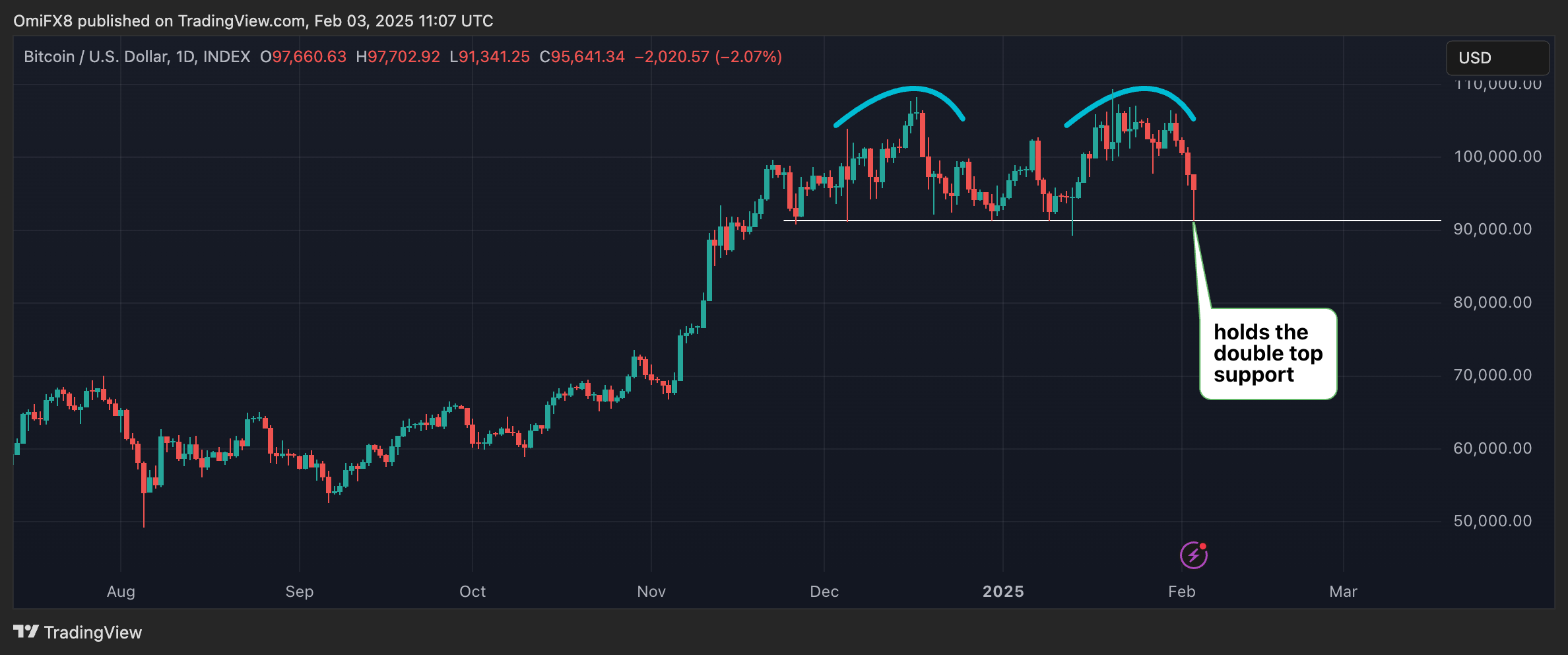
BTC has bounced from the double top support line at $91,384, trimming losses.
The series of red candles, however, suggests the path of of least resistance is on the lower side for now.
A close (UTC midnight) under the support line would trigger a double top bearish reversal pattern, opening doors to a potential drop to $75,000.
Crypto Equities
MicroStrategy (MSTR): closed on Friday at $334.79 (-1.56%), down 5.37% at $316.81 in pre-market.
Coinbase Global (COIN): closed at $291.33 (-3.31%), down 5.69% at $274.74 in pre-market.
Galaxy Digital Holdings (GLXY): closed at C$28.48 (-2.90%)
MARA Holdings (MARA): closed at $18.34 (-4.38%), down 5.34% at $17.36 in pre-market.
Riot Platforms (RIOT): closed at $11.88 (-0.17%), down 4.21% at $11.40 in pre-market.
Core Scientific (CORZ): closed at $12.27 (+0.08%), down 6.68% at $11.45 in pre-market.
CleanSpark (CLSK): closed at $10.44 (-4.83%), down 5.08% at $9.91 in pre-market.
CoinShares Valkyrie Bitcoin Miners ETF (WGMI): closed at $22.55 (+0.22%), down 6.34% at $21.12 in pre-market.
Semler Scientific (SMLR): closed at $51.96 (-0.36%), down 6.08% at $48.80 in pre-market.
Exodus Movement (EXOD): closed at $49.88 (-18.74%), up 2.25% at $51 in pre-market.
ETF Flows
Spot BTC ETFs:
Daily net flow: $318.6 million
Cumulative net flows: $40.50 billion
Total BTC holdings ~ 1.172 million.
Spot ETH ETFs
Daily net flow: $27.8 million
Cumulative net flows: $2.76 billion
Total ETH holdings ~ 3.634 million.
Source: Farside Investors
Overnight Flows
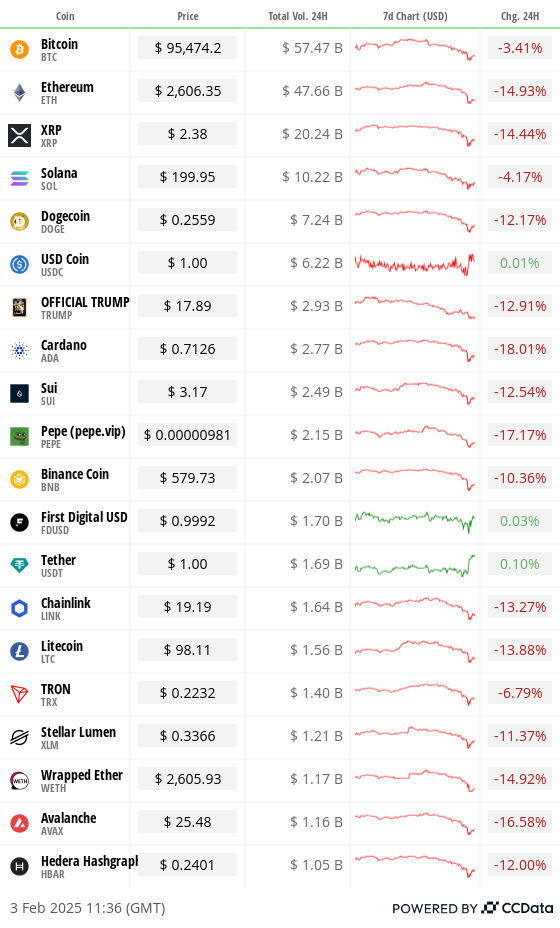
Chart of the Day
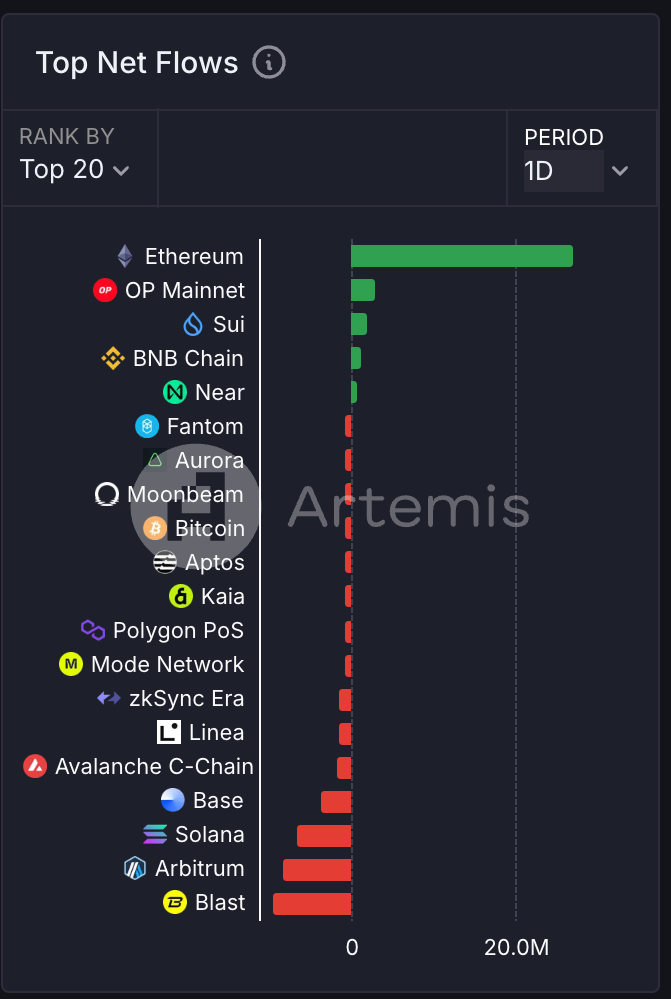
Ethereum has seen the highest amount of net inflows through crypto bridges in the past 24 hours, while the usual leaders Base, Solana, Arbitrum have seen most outflows.
That’s a classic risk-off investor behavior, where the move to the oldest and biggest smart contract blockchain, anticipating deeper market swoon.
While You Were Sleeping
XRP, Dogecoin Plunge 25% as Crypto Liquidations Cross $2.2B on Tariffs Led Dump (CoinDesk): On Sunday, major cryptocurrencies including XRP, DOGE, and ADA slumped as U.S. tariffs on Canada and Mexico announced on Saturday fueled trade war fears and $2.2 billion in futures liquidations.
Chance of Bitcoin Tanking to $75K Doubles as Trump’s Tariffs Ignite Trade War, Derive’s Onchain Options Market Shows (CoinDesk): Derive.xyz’s on-chain options now indicate a 22% chance bitcoin will drop to $75K by March 28 — double last week’s odds.
USDe Stable Despite Trade War Volatility (CoinDesk): Ethena’s synthetic stablecoin USDe maintained its $1 peg amid volatile crypto markets, likely aided by its yield-generating mechanism.
Dollar Soars, Stocks Fall as Trump Imposes Tariffs: Markets Wrap (Bloomberg): The tariffs announced Saturday propelled the dollar to a two-year high as global stocks, U.S. equity futures, and crypto prices plunged amid mounting fears of rising inflation and economic disruption.
Beijing Prepares Its Opening Bid to Talk Trade With Trump (The Wall Street Journal): China will reportedly contest Trump’s 10% tariffs via the WTO and resume trade talks to revive the Phase One deal by pledging increased U.S. purchases and investments.
Bank of England Expected to Cut Interest Rates Again as U.K. Economy Stagnates (Financial Times): With stagnant growth and easing inflation, the Bank of England is expected to cut rates by 0.25% this week, though rising energy costs and trade tensions may trigger stagflationary pressures.
In the Ether
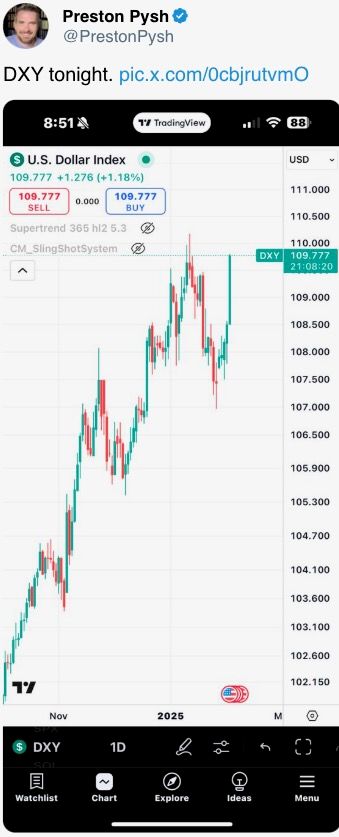

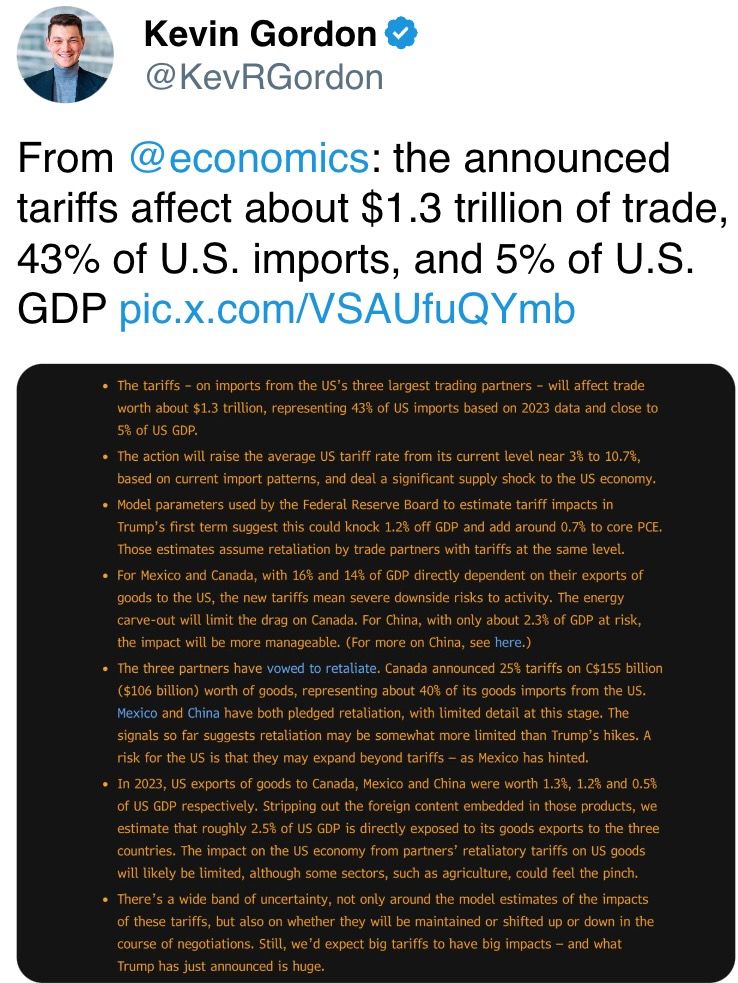
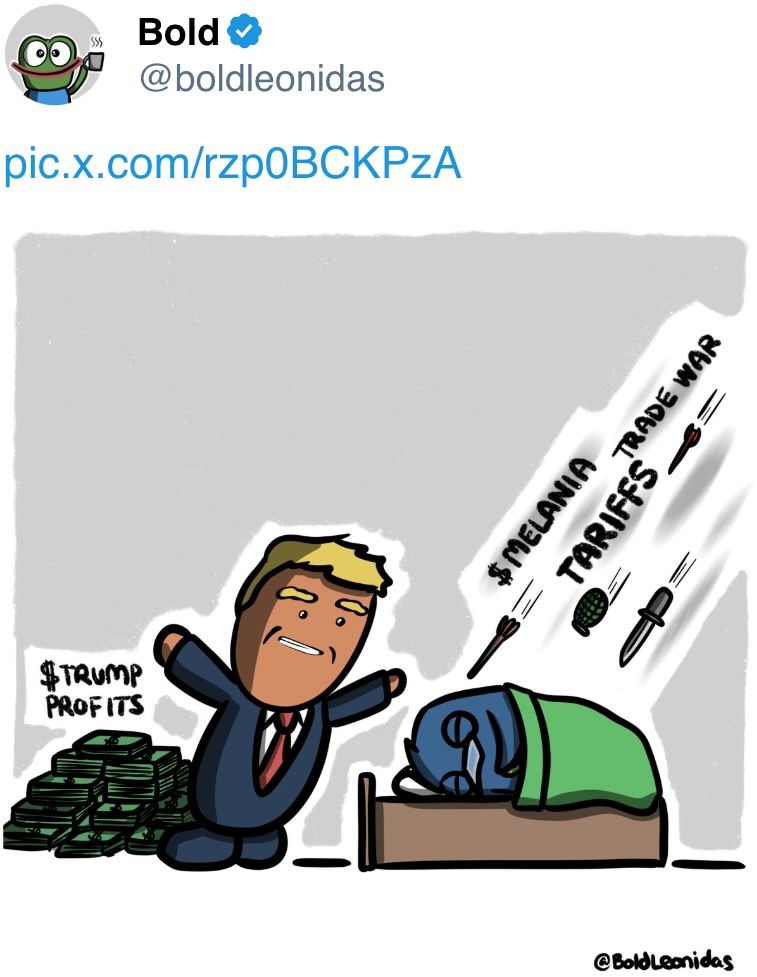
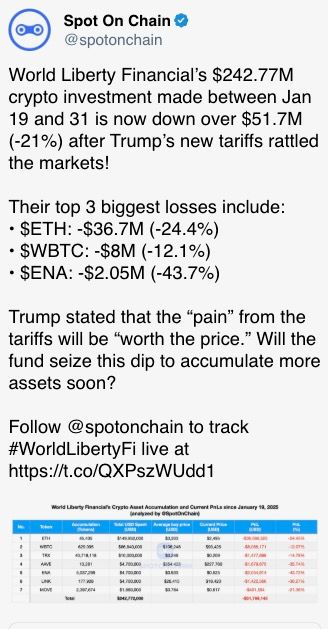
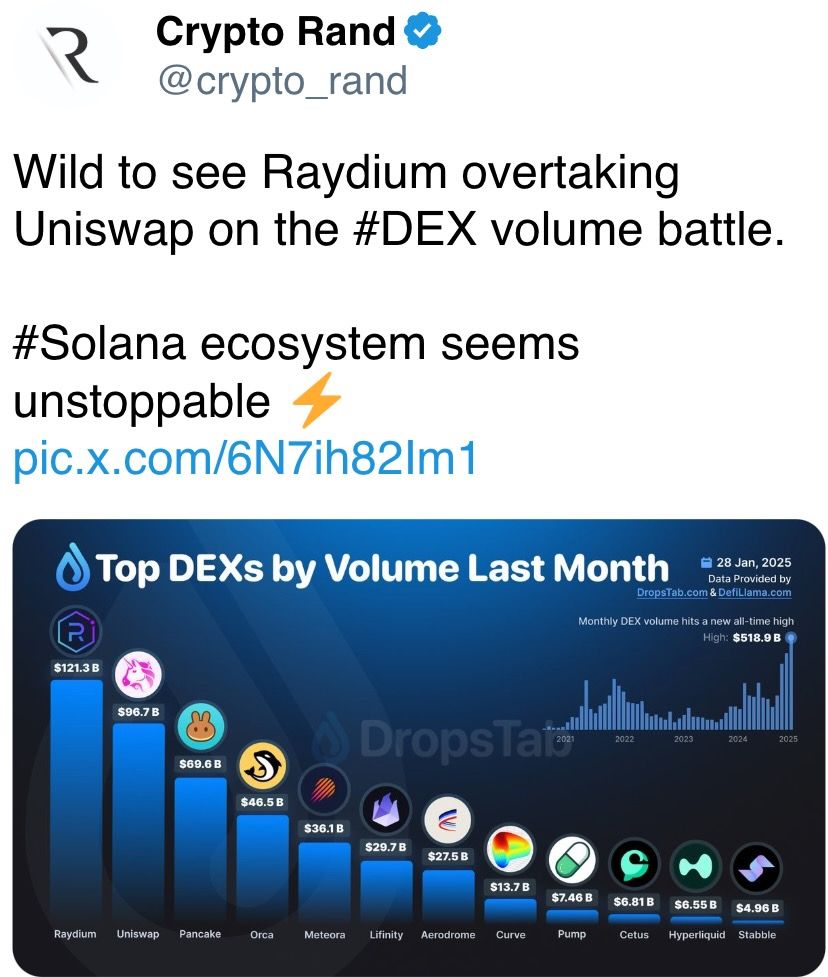
Uncategorized
What’s Next for Bitcoin and Ether as Downside Fears Ease Ahead of Fed Rate Cut?

Fears of a downside for bitcoin (BTC) and ether (ETH) have eased substantially, according to the latest options market data. However, the pace of the next upward move in these cryptocurrencies will largely hinge on the magnitude of the anticipated Fed rate cut scheduled for Sept. 17.
BTC’s seven-day call/put skew, which measures how implied volatility is distributed across calls versus puts expiring in a week, has recovered to nearly zero from the bearish 4% a week ago, according to data source Amberdata.
The 30- and 60-day option skews, though still slightly negative, have rebounded from last week’s lows, signaling a notable easing of downside fears. Ether’s options skew is exhibiting a similar pattern at the time of writing.
The skew shows the market’s directional bias, or the extent to which traders are more concerned about prices rising or falling. A positive skew suggests a bias towards calls or bullish option plays, while a negative reading indicates relatively higher demand for put options or downside protection.
The reset in options comes as bitcoin and ether prices see a renewed upswing in the lead-up to Wednesday’s Fed rate decision, where the central bank is widely expected to cut rates and lay the groundwork for additional easing over the coming months. BTC has gained over 4% to over $116,000 in seven days, with ether rising nearly 8% to $4,650, according to CoinDesk data.
What happens next largely depends on the size of the impending Fed rate cut. According to CME’s Fed funds futures, traders have priced in over 90% probability that the central bank will cut rates by 25 basis points (bps) to 4%-4.25%. But there is also a slight possibility of a jumbo 50 bps move.
BTC could go berserk in case the Fed delivers the surprise 50 bps move.
«A surprise 50 bps rate cut would be a massive +gamma BUY signal for ETH, SOL and BTC,» Greg Magadini, director of derivatives at Amberdata, said in an email. «Gold will go absolutely nuts as well.»
Note that the Deribit-listed SOL options already exhibit a strong bullish sentiment, with calls trading at 4-5 volatility premium to puts.
Magadini explained that if the decision comes in line with expectations for a 25 bps cut, then a continued calm «grind higher» for BTC looks likely. ETH, meanwhile, may take another week or so to retest all-time highs and convincingly trade above $5,000, he added.
Uncategorized
Asia Morning Briefing: Native Markets Wins Right to Issue USDH After Validator Vote

Good Morning, Asia. Here’s what’s making news in the markets:
Welcome to Asia Morning Briefing, a daily summary of top stories during U.S. hours and an overview of market moves and analysis. For a detailed overview of U.S. markets, see CoinDesk’s Crypto Daybook Americas.
Hyperliquid’s validator community has chosen Native Markets to issue USDH, ending a weeklong contest that drew proposals from Paxos, Frax, Sky (ex-MakerDAO), Agora, and others.
Native Markets, co-founded by former Uniswap Labs president MC Lader, researcher Anish Agnihotri, and early Hyperliquid backer Max Fiege, said it will begin rolling out USDH “within days,” according to a post by Fiege on X.
According to onchain trackers, Native Markets’ proposal took approximately 70% of validators’ votes, while Paxos took 20%, and Ethena came in at 3.2%.
The staged launch starts with capped mints and redemptions, followed by a USDH/USDC spot pair before caps are lifted.
USDH is designed to challenge Circle’s USDC, which currently dominates Hyperliquid with nearly $6 billion in deposits, or about 7.5% of its supply. USDC and other stablecoins will remain supported if they meet liquidity and HYPE staking requirements.
Most rival bidders had promised to channel stablecoin yields back to the ecosystem with Paxos via HYPE buybacks, Frax through direct user yield, and Sky with a 4.85% savings rate plus a $25 million “Genesis Star” project.
Native Markets’ pitch instead stressed credibility, trading experience, and validator alignment.
Market Movement
BTC: BTC has recently reclaimed the $115,000 level, helped by inflows into ETFs, easing U.S. inflation data, and growing expectations for interest rate cuts. Also, technical momentum is picking up, though resistance sits around $116,000, according to CoinDesk’s market insights bot.
ETH: ETH is trading above $4600. The price is being buoyed by strong ETF inflows.
Gold: Gold continues to trade near record highs as traders eye dollar weakness on expected Fed rate cuts.
Elsewhere in Crypto:
Uncategorized
BitMEX Co-Founder Arthur Hayes Sees Money Printing Extending Crypto Cycle Well Into 2026

Arthur Hayes believes the current crypto bull market has further to run, supported by global monetary trends he sees as only in their early stages.
Speaking in a recent interview with Kyle Chassé, a longtime bitcoin and Web3 entrepreneur, the BitMEX co-founder and current Maelstrom CIO argued that governments around the world are far from finished with aggressive monetary expansion.
He pointed to U.S. politics in particular, saying that President Donald Trump’s second term has not yet fully unleashed the spending programs that could arrive from mid-2026 onward. Hayes suggested that if expectations for money printing become extreme, he may consider taking partial profits, but for now he sees investors underestimating the scale of liquidity that could flow into equities and crypto.
Hayes tied his outlook to broader geopolitical shifts, including what he described as the erosion of a unipolar world order. In his view, such periods of instability tend to push policymakers toward fiscal stimulus and central bank easing as tools to keep citizens and markets calm.
He also raised the possibility of strains within Europe — even hinting that a French default could destabilize the euro — as another factor likely to accelerate global printing presses. While he acknowledged these policies eventually risk ending badly, he argued that the blow-off top of the cycle is still ahead.
Turning to bitcoin, Hayes pushed back on concerns that the asset has stalled after reaching a record $124,000 in mid-August.
He contrasted its performance with other asset classes, noting that while U.S. stocks are higher in dollar terms, they have not fully recovered relative to gold since the 2008 financial crisis. Hayes pointed out that real estate also lags when measured against gold, and only a handful of U.S. technology giants have consistently outperformed.
When measured against bitcoin, however, he believes all traditional benchmarks appear weak.
Hayes’ message was that bitcoin’s dominance becomes even clearer once assets are viewed through the lens of currency debasement.
For those frustrated that bitcoin is not posting fresh highs every week, Hayes suggested that expectations are misplaced.
In his telling, investors from the traditional world and those in crypto actually share the same premise: governments and central banks will print money whenever growth falters. Hayes says traditional finance tends to express this view by buying bonds on leverage, while crypto investors hold bitcoin as the “faster horse.”
His conclusion is that patience is essential. Hayes argued that the real edge of holding bitcoin comes from years of compounding outperformance rather than short-term speculation.
Coupled with what he sees as an inevitable wave of money creation through the rest of the decade, he believes the present crypto cycle could stretch well into 2026, far from exhausted.
-

 Business11 месяцев ago
Business11 месяцев ago3 Ways to make your business presentation more relatable
-

 Fashion11 месяцев ago
Fashion11 месяцев agoAccording to Dior Couture, this taboo fashion accessory is back
-

 Entertainment11 месяцев ago
Entertainment11 месяцев ago10 Artists who retired from music and made a comeback
-

 Entertainment11 месяцев ago
Entertainment11 месяцев ago\’Better Call Saul\’ has been renewed for a fourth season
-

 Entertainment11 месяцев ago
Entertainment11 месяцев agoNew Season 8 Walking Dead trailer flashes forward in time
-

 Business11 месяцев ago
Business11 месяцев ago15 Habits that could be hurting your business relationships
-

 Entertainment11 месяцев ago
Entertainment11 месяцев agoMeet Superman\’s grandfather in new trailer for Krypton
-

 Entertainment11 месяцев ago
Entertainment11 месяцев agoDisney\’s live-action Aladdin finally finds its stars





